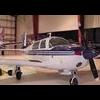High CHT temp on #1 Cyl
-
Members Online
- mhoffman
- N201MKTurbo
- sdmideas
- Ragsf15e
- Shadrach
- EricJ
- LANCECASPER
- dhc
- jetdriven
- Smiles201
- patrickf
- Danb
- Niko182
- Andy95W
- takair
- 7.Mooney.Driver.0
- prillayo03
- exM20K
- Jason B.
- jamesyql
- Jamesp
- Ron McBride
- Glen S.
- bhtitle
- PT20J
- Ronnie Pool
- AJ88V
- Skypunk107
- TerminalSpeed
- Tmack201
- amillet
- Supereri73
- onegreen
- SukitCirrus
- EarthboundMisfit
- TCC
- 1980Mooney
- 1967 427
- ELysek1


Recommended Posts
Join the conversation
You can post now and register later. If you have an account, sign in now to post with your account.